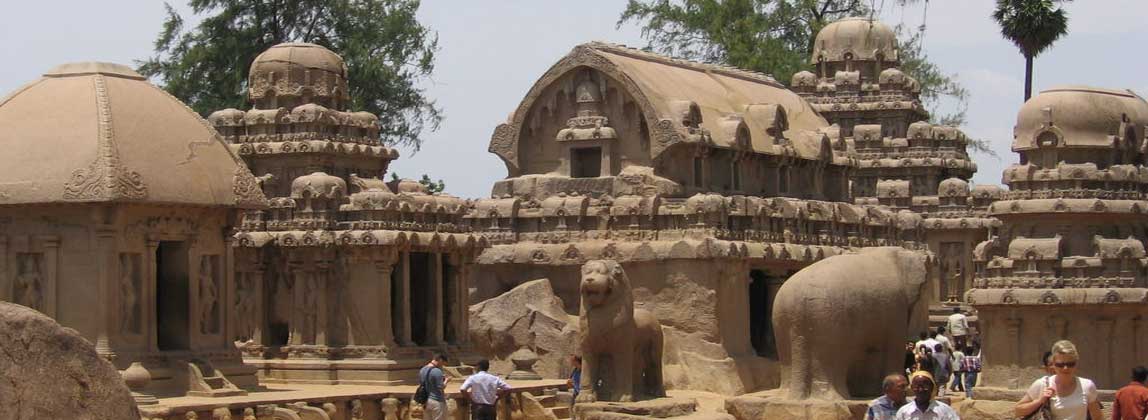


MAHABALIPURAM - Also known as Mamallapuram, it is a 7th century coastal town located about 60 km from Chennai. Mahabalipuram's name originated from Mamallapuram, where 'mamall' means excellent wrestler and was a name offered to King Narasimha Varman I.
Mahabalipuram is a UNESCO world heritage site, which has various historical monuments dating back to period between 7th to 9th centuries. It is home to various rocks cut monuments that stand as an example of the Dravidian architecture. Mahabalipuram is a perfect treat for tourists with its long stretches of sea coast and some of the amazing carved granite structures with Dravidian architecture.
The Arjuna's penance is one of the most famous stone carvings at Mahabalipuram. It is an enormous relief made on two massive boulders. One of the biggest open-air rock canvases in the world, the Arjuna's penance is 31m long and 9m high. There are many schools of thoughts over the theme of Arjuna's penance. One believes that the sculpture shows Arjuna undertaking a penance to obtain a rare weapon against his enemies; the other School believes that it portrays the legend of the River Ganges's descent to earth. Whatever the reasons, Arjuna penance remains one of the most beautifully carved structures. Arjuna's Penance has over 100 figures of gods and semi divine creatures , birds and beasts, man and saint.
The Five Rathas, also known as Panch Rathas, is a set of rock temples. They are excellent examples of the evolution of Dravidian style architecture. These temples are built in the same shape as pagodas, and greatly resemble Buddhist shrines and monasteries. The rathas are associated with the great epic Mahabharata. These are the architectural prototypes demonstrate the imposing gopurams and Vimanas; multi pillared halls and sculptured walls, which dominate the landscape of Tamil Nadu.
In Mahabalipuram, there are eight mandapams (shallow, rock-cut halls) scattered over the main hill, two of which have been left unfinished. They are mainly of interest for their internal figure sculptures. One of the earliest rock-cut temples is the Krishna Mandapam. It features carvings of a pastoral scene showing Krishna lifting up the Govardhana Mountain to protect his kinsfolk from the wrath of Indra. On the hill rests a dangerously balanced boulder named Krishna's Butterball after his legendary affinity for fresh butter.
This beautiful and romantic temple, ravaged by wind and sea, represents the final phase of Pallavas art and it was built in the late 7th century during the reign of Rajasimha. It is believed that at one point in time there were seven such temples, six of them were victims to the natural elements of erosion. This temple has three shrines; one dedicated to Lord Vishnu and the other two to Lord Shiva. The frothy waves form a striking backdrop to the temple, protected by rows of rock-carved bulls. The most unique feature of the temple is that it houses shrines to both Lord Shiva and Lord Vishnu.